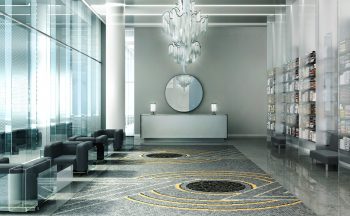 June 2022
June 2022
At one time luxury high-rise communities were known for having a grand or luxurious lobby with high ceilings, plenty of space, marble, plants and luxury furniture. That lobby became an extension of the home where residents would relax, congregate, or watch the comings and goings of others.
Communities no longer want residents to spend hours in the lobby in their robes and slippers, possibly shirtless or shoeless. The lobby is no place for sleeping, eating, playing by rambunctious children or teenagers, or changing diapers. People leave food wrappings and water bottles behind for others to clean up. Heavily used lobby furniture, more luxurious and expensive than what residents have in their home, requires more work to be cleaned. It becomes damaged and wears out more quickly. Replacement, if not budgeted for, can take years.
All of this impacts on the community’s image and makes some residents uncomfortable. Prospective buyers are less willing to purchase or pay a premium once exposed to this environment.
The lobby is part of the building’s image and not personal living space. Consistent with this, communities now choose to discourage lounging in their lobbies.
Some communities are reconsidering how this space is to be used. A large lobby can be subdivided to make the space more useful. Subdividing creates smaller spaces for other uses that may include package receiving, shelving for pick up and delivery of laundry services, or cold storage for delivery of perishables. Amenities can be expanded to incorporate a library, lounge, exercise room, children’s play area or remote working space.
Offering direct access to some amenities from the lobby has the further advantage of improving security by reducing the number of people receiving access to internal rooms and spaces.
The smaller lobby which remains can be less costly to furnish and maintain.







